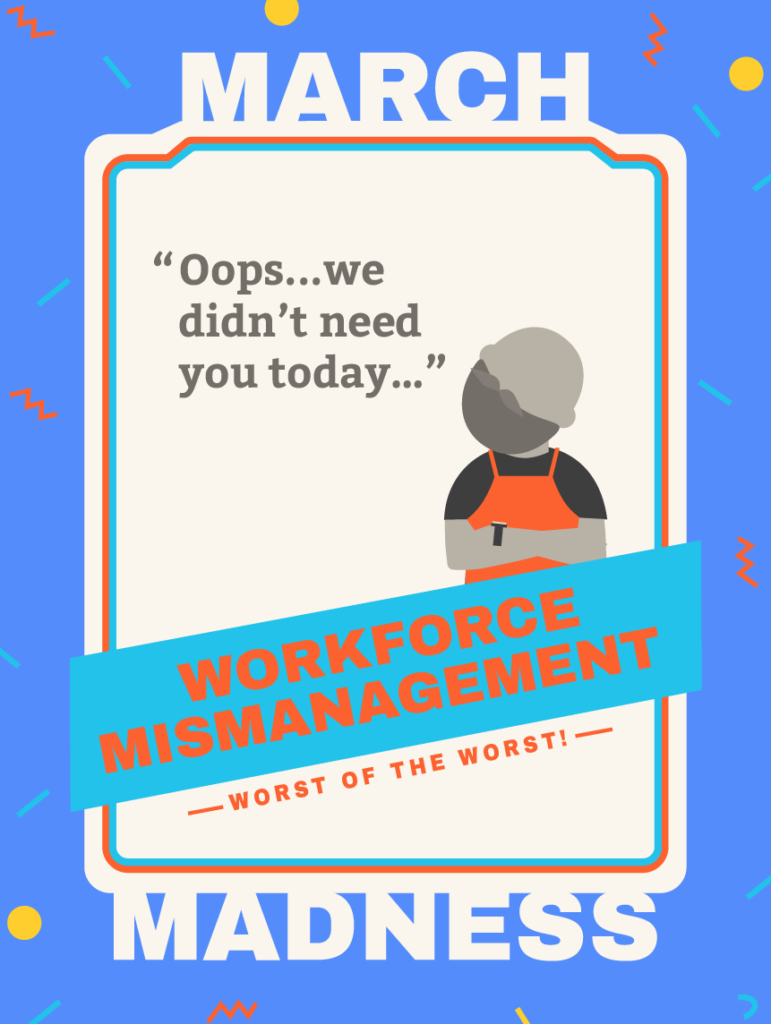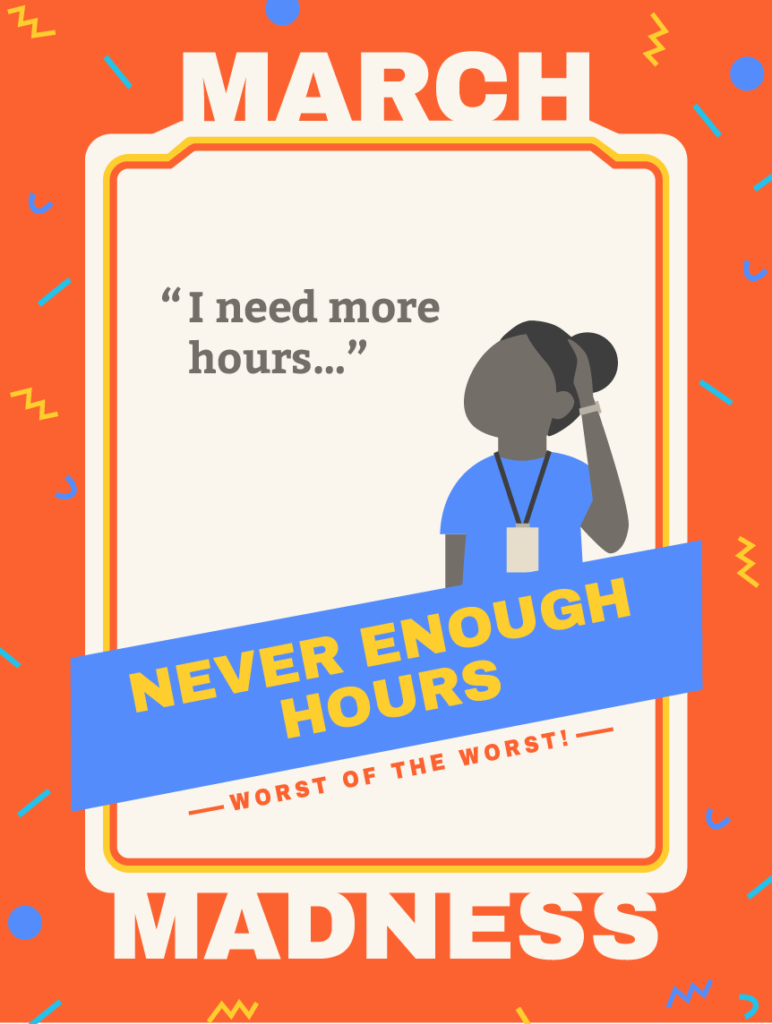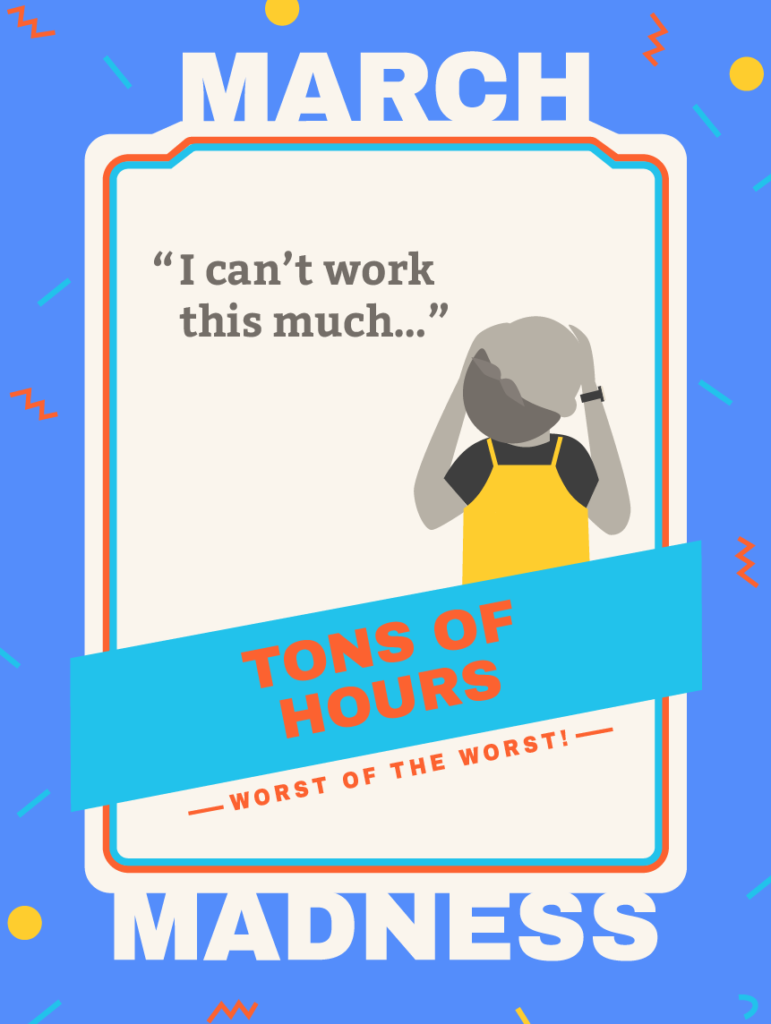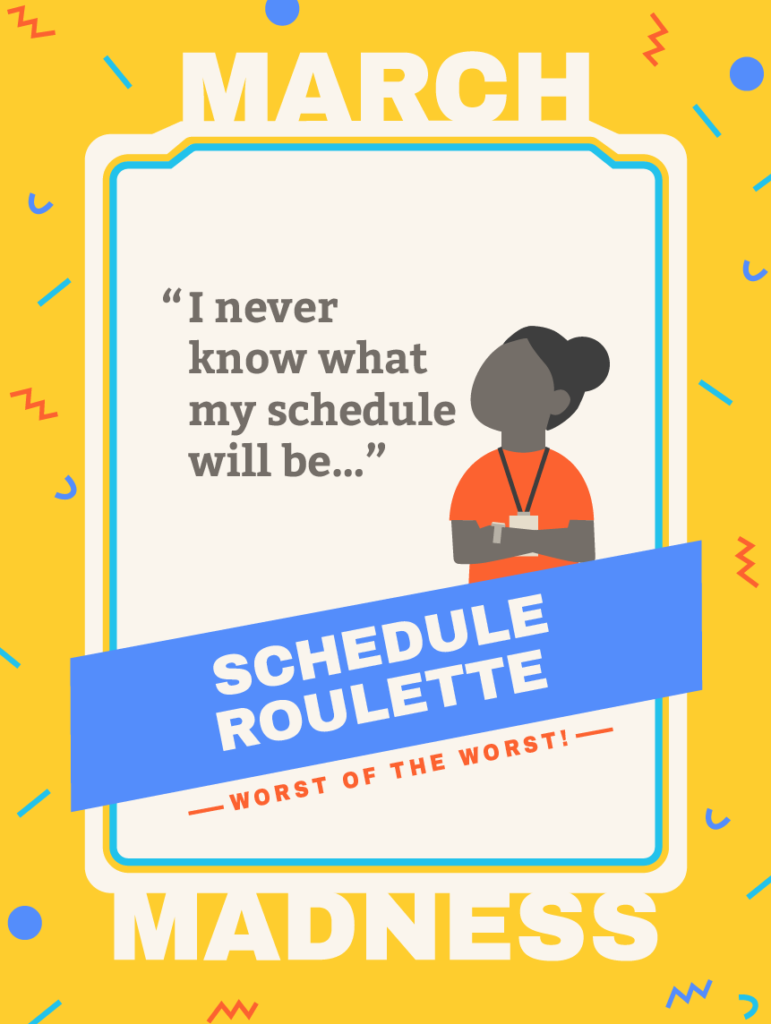The Real March Madness: The Worst Scheduling Practices Ranked
March 15, 2017
With the national college basketball tournaments set to kick off today, we’re launching a March Madness bracket of our own to highlight the true madness imposed on the lives of shift workers.

Each day, we’ll run a matchup on Twitter, and collect votes for the worst practice. Winners will be announced the next day. Then, on March 31st, we’ll reveal the Worst of the Worst — the scheduling practice that drives workers the maddest.
The UN-Sweet 16: March 16 – 23
The Hateful 8: March 24 – 27
The Effed-Up 4: March 28 – 29
The Terrible 2: March 30
Worst of the Worst Announced: March 31st
Please take a moment to vote and share with your friends! Check out the first matchup here.
Meet the Players

“Clopening” (closing + opening) is a scheduling practice that puts one person on the closing shift (which typically means cleaning up, cashing out, and finalizing daily reports long after the store is closed) — and then the very next opening shift on consecutive days.
Workers leave late at night, just to turn around the next morning and go back to work often with less than eight hours to get home, eat, spend time with family or do school work, and sleep.

An on-call means you are scheduled to be available for work you may not be called in to do.
This is the dreaded “we may or may not need you to stay late or come in tomorrow” gray area that make it challenging for workers to balance their lives. Workers miss critical opportunities, like getting second jobs, attending school, or parenting

An on-call shift extension means your shift might get extended, so after your shift is supposed to be over you are waiting around for an additional shift that may or may not happen.
This volatility leads to burnout and turnover that cost employers money in the long term. If you’re “on call” for the rest of the night after your shift, you can’t use that time to make money at another job, attend class, or figure out commuting.

Today, many businesses use workforce management technology, or “workforce optimization systems,” to ensure that stores have exactly the right number of workers, not only by the day but by the hour.
This is intended to eliminate human error, but it also eliminates the human element – making schedules that work around customer traffic or sales trends but not around people’s lives.
With work schedules sliced into micro-shifts, this leaves workers with unreliable weekly hours for childcare or basic meals.

Ideally, workers should get their schedules in advance, preferably by at least two weeks, and they should have guarantees that it won’t change without their agreement.
With two weeks advance notice of their work schedule, working parents and students will have more flexibility to balance their responsibilities on and off the job — like making doctor’s appointments, attending college classes, working more than one job, arranging childcare, and last but not least, to pay their bills.

Even with multiple gigs, workers regularly don’t get as many hours as they want or need , even while their employer continues to hire additional part-time workers.
For shift workers to plan ahead, they not only need to know when they’re going to work but how much to be sure their paychecks cover the bills. Some workers want to stay part-time, but with more hours; others want to get to full-time but employers keep hours low to avoid paying for benefits.

Too many hours can feel like too much of a good thing — while workers who are over-scheduled make more income, they are most at risk for accidents due to not enough sleep, health problems, and making mistakes at work.
Since shift workers rarely have consecutive weekend days off, an overloaded schedule can go on for months — even years — with no chance to catch up and rest.

An inconsistent schedule creates unstable lives. If workers can’t make plans more than a week in advance, this harms their ability to make and keep appointments, spend time with family, and plan income.
Without a week-to-week sense of days off, money in the bank, and time on the job, workers live life week-to-week and are never able to get ahead.
Reposted from Workshift.us site
for Equity & Evidence